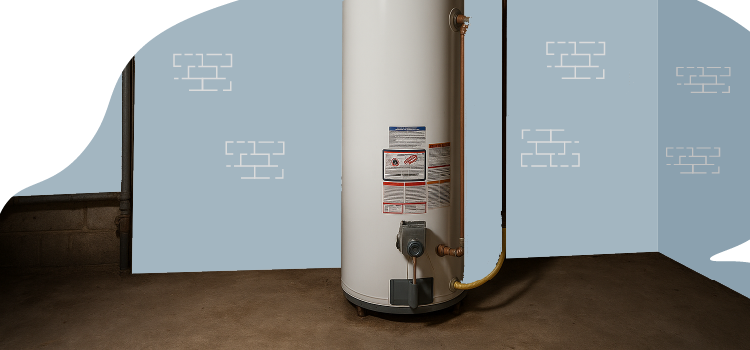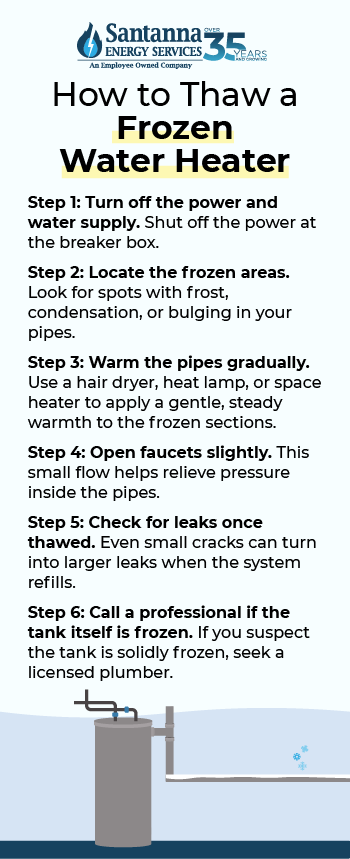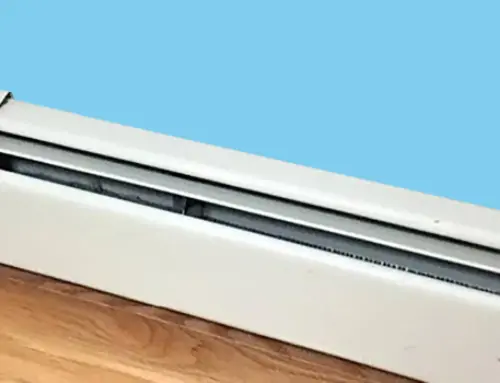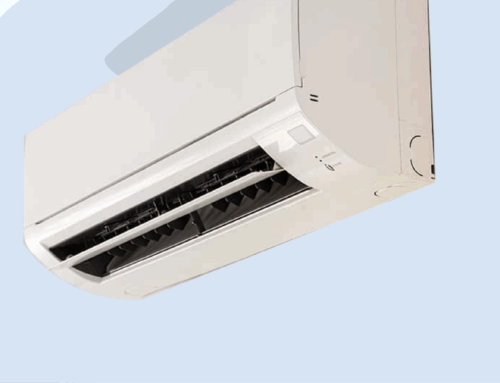Can a Hot Water Heater Freeze?
by Tyler Castle
17.6 min read

Whether it's sitting in a chilly basement, a drafty garage, or a seasonal cabin, a frozen water heater can quickly turn into more than just an inconvenience. It can leave you without hot water, drive up your energy bills as the system struggles to recover, or even cause costly damage if the tank or pipes burst.
With a little know-how, you can prevent your water heater from freezing and keep it running efficiently through the coldest Midwest winters. With your energy experts behind you, we'll cover what on your water heater actually freezes, the warning signs to watch for, what to do if it happens, and most importantly, how to protect your system before the next cold snap. Let's get into it.
Key Points of This Article:
- Hot water heaters can freeze in Midwest winters when temperatures drop low enough.
- Location matters most. Water heater units in unheated garages, basements, crawl spaces, or utility rooms face the highest risk.
- Use this rule of thumb: If the room feels as cold as outside, take it seriously. Your pipes and heater could be in danger of freezing.
- Hot water heaters can freeze at 32°F if exposed for a long enough period and they have poor insulation.
- Never turn off your water heater during freezing weather if you live in the home, since running it helps prevent frozen pipes and tanks.
- Freezing can cause permanent damage because expanding ice cracks pipes, valves, and even the tank itself.
- Repairs are costly, with most homeowners paying between $150 and $750 to fix a frozen water heater, while full replacement can cost much more.
Can a Water Heater Freeze in Cold Weather?
A water heater can definitely freeze in cold weather. But whether it happens depends on where the unit is located and how well it's protected. A typical water heater is a large tank filled with water, and just like the pipes in your home, that water can cause it to freeze if the surrounding temperature drops to 32°F or below for long enough.
In most homes, water heaters are placed in basements, utility rooms, or closets where the indoor temperature stays above freezing. In those cases, the tank itself is rarely at risk.
The bigger concern is when the water heater sits in an unheated space like a garage, crawl space, or vacation home left empty in the winter. In those conditions, both the tank and the connected pipes can freeze solid.
This really matters because frozen water expands, and inside a closed system like a water heater, that pressure can crack pipes, damage valves, or even split the tank.
Once that happens, the repair costs skyrocket, and you may need a full replacement. Beyond damage, even a partially frozen heater will struggle to work efficiently, wasting energy as it tries to reheat cold water.
That's why it's so important to understand the risk. If you live in Midwest states like Illinois, Ohio, or Pennsylvania, where subzero temperatures are common, protecting your water heater from freezing isn't just about comfort. It's about avoiding expensive damage and keeping your energy bills under control.
Why Do Water Heaters Freeze?
Water heaters freeze for the same reason pipes do. When the temperature around them drops below freezing for too long, the water within them freezes, causing the pipes and tank to expand and potentially burst.
Even when your tank is full of hot water, it's still at risk for freezing if your power is shut off for too long. Think about it like this: if your power goes out and the weather conditions are right, the water inside will eventually cool down and freeze if the surrounding space is not kept warm.
The most common reason this happens is location. Water heaters installed in unheated garages, basements, crawl spaces, or outdoor utility rooms are the most vulnerable. Cold drafts, poor insulation, or cracks in foundation walls let freezing air in and surround the tank with temperatures low enough to cause trouble.
Another big factor is lack of use. In seasonal homes or cabins that sit empty all winter, water left sitting in the heater can freeze if the system is not drained or protected. Even in occupied homes, if the heater doesn't run often or if power is lost during a storm, the risk of freezing and costly repairs increases.
What Happens If My Water Heater Freezes?
At first, you may simply notice that no hot water comes out of your faucets because the pipes are blocked with ice. But as the ice builds up, it can create cracks in the metal or plastic parts of your pipes and tank.
If the ice in your pipes or tank begins to thaw, those cracks turn into leaks (sometimes just small drips). Other times, this can lead to major bursts that can flood a basement or utility room.
In severe cases, the tank itself can split, which almost always means a full replacement is needed. Even if the tank doesn't burst, a water heater that's been frozen may have hidden internal damage, like weakened valves, a warped heating element, or electrical problems.
It's also important to remember that a partially frozen heater often works less efficiently once it thaws. It may take longer to heat water, it might use more energy to recover, or it can cycle more frequently, leading to higher utility bills.
Signs Your Water Heater May Be Frozen
No matter your situation, make sure you're prepared and know what to look for with our expert insight! A frozen water heater doesn't always mean the entire tank is solid ice; it often starts with frozen pipes or valves that block the flow of water. Here are some of the most common signs your water heater might be frozen:
- No hot water is coming from your faucets. The most obvious sign is turning on the tap and getting nothing or only a small trickle. This usually means the pipes leading to or from the heater are frozen if the conditions are right, cutting off water flow.
- Unusual noises. Popping, cracking, or banging sounds from the tank or pipes can signal ice expansion inside the system. Water expands when it freezes, and that pressure often creates stress noises before a crack forms.
- Visible frost, ice, or condensation. Check around exposed pipes connected to the water heater. Frost or a layer of condensation on the outside can indicate the water inside is dangerously cold or already frozen.
- Leaks or pooling water. If ice inside the heater or pipes has already caused a crack, you may see water seeping or pooling around the base of the unit once temperatures rise and the ice starts to thaw.
- Temperatures start to drop in the surrounding area. If the room where your water heater is located feels as cold as outside, it's a red flag that both your pipes and heater are at risk of freezing.
Catching these signs early gives you a chance to shut off the water, turn off the heater, and take safe steps to thaw frozen pipes or protect them before they burst. Ignoring them can quickly lead to major water damage and expensive repairs.
How Cold Does It Have to Be for a Water Heater to Freeze?
A water heater can start to freeze when the temperature around it drops to 32°F (0°C) or lower for an extended period of time. While most water heaters inside a heated home are safe, the risk goes up if the unit is in an unheated space like a garage, basement, crawl space, or outdoor utility room.
In these areas, the air can dip below freezing quickly, especially overnight, and the water inside the tank or connected pipes will eventually freeze if left unprotected.
It's also important to know that water doesn't freeze instantly at 32°F. It depends on how long the heater is exposed to cold air and how well the space is insulated.
For example, a tank in a drafty garage could freeze in just a few hours of subfreezing weather, while one in a semi-insulated basement might take days. Prolonged cold snaps in Midwest states like Ohio, Pennsylvania, and Illinois make this risk very real, especially during power outages when the heater isn't actively reheating water.
Once the water in the tank or pipes begins to freeze, it expands and puts pressure on the system. Even partial freezing can block water flow, damage valves, or crack pipes, leading to costly repairs. That's why adding insulation, sealing drafts, and keeping the space above freezing are key steps for protecting your water heater when temperatures drop.
Should You Turn Off a Water Heater in Freezing Weather?
You should not turn off a water heater in freezing weather if you are living in the home, because keeping it on helps maintain hot water and prevents the tank and pipes from freezing. When the heater runs, it cycles water regularly, keeping temperatures above freezing and reducing the risk of costly damage.
The only time it makes sense to turn off a water heater in freezing weather is if you're leaving a seasonal home or cabin empty for the winter. Just be sure to drain the tank completely first.
Who's Most at Risk for a Freezing Water Heater in the Midwest?
If your water heater is in an unheated area, your home is prone to outages, or you leave it vacant for long periods, you're in the "high-risk" group. Taking preventive steps now can protect both your comfort and your wallet during harsh Midwest winters.
- Unheated spaces: Units located in garages, basements, crawl spaces, or utility sheds can easily freeze when the surrounding air drops below 32°F. Add insulation around the tank and pipes, use a water heater blanket, and keep the surrounding area above freezing with a space heater or weatherstripping.
- Rural households: More frequent power outages during winter storms can cause the water inside the heater to cool rapidly, increasing the chance of freezing. Consider backup power options such as a generator or battery system to keep the heater running during outages, and shut off the water supply if the outage lasts more than a few hours.
- Seasonal or vacation homes: If the water heater is not drained or protected, the water can freeze, crack the tank, or burst pipes before anyone notices. Drain your water heater completely before leaving, shut off the supply lines, and consider installing a drain-down kit or smart monitoring system for added peace of mind.
- Older homes: Poor insulation or drafty foundations allow cold air to seep into basements or crawl spaces, lowering temperatures around the water heater. Seal cracks, add insulation around basement walls and floors, and install foam sleeves on exposed pipes to keep temperatures stable.
Midwest states experience long stretches of subzero temperatures, making freeze protection more important than in milder climates. Combine multiple strategies such as insulation, regular maintenance, dripping faucets on cold nights, and pipe heat tape to create layered protection against extended cold snaps.
How to Thaw a Frozen Water Heater Safely
If your water heater freezes, the most important thing to remember is safety first. A frozen water heater is not just inconvenient. It can also be dangerous if you try to thaw it the wrong way. Here's what you need to know before taking action:
Step 1: Turn off the power and water supply.
If you have an electric water heater, shut off the power at the breaker box. If it is a gas unit, switch the control knob to "off." You should also close the cold water supply valve to stop more water from entering the tank. Taking these steps reduces the risk of electrical hazards, overheating, or sudden bursts as the ice inside the system begins to thaw.
Step 2: Locate the frozen areas.
Most of the time, it's not the whole tank that freezes, it's the pipes leading to and from the heater. Look for spots with frost, condensation, or bulging.
Step 3: Warm the pipes gradually.
You can use a hair dryer, heat lamp, or space heater to apply a gentle, steady warmth to the frozen sections. Always begin near the faucet end and slowly work your way toward the water heater, which helps relieve pressure as the melting water starts to flow out.
For the pipes that you haven't gotten to yet with your warm source of air, be sure to open the cabinets that the pipes are housed in, if possible, to start the flow of warm house air to the pipes.
It's important that you avoid open flames, propane torches, or boiling water. These can crack the pipes, damage components, or start a fire.
Step 4: Open Faucets slightly.
Turn on a hot water tap in the house just enough to let water trickle. This small flow helps relieve pressure inside the pipes and reduces the risk of sudden bursts.
Step 5: Check For Leaks Once Thawed.
As the ice melts, watch for dripping or pooling water around the tank and pipes. Even small cracks can turn into larger leaks when the system refills. If you notice damage, keep the water supply off and call a plumber immediately.
Step 6: Call a Professional if the Tank Itself is Frozen.
Thawing an entire water heater tank is not a DIY project. If you suspect the tank is solidly frozen or if you see bulging, cracks, or leaks, a licensed plumber is the safest option.

How to Prevent Your Water Heater From Freezing
The good news about frozen water heaters is that prevention is simple and can even potentially save you money on your energy bills! Here are some of the best strategies every homeowner should know:
Drain your water heater if you own a seasonal home or cabin.
If you will be away for the winter, never leave water sitting in the tank. Once the heat is off, standing water will eventually freeze. Draining the tank and shutting off supply lines removes the risk of burst pipes or tank cracks.
Let faucets drip during extreme cold.
On subzero nights, turn a couple of faucets on just enough to keep a steady drip. Flowing water doesn't freeze as easily as standing water, and this simple trick relieves pressure in the lines.
Install a hot water recirculation system.
A recirculation system keeps hot water moving constantly through your pipes, which helps prevent freezing. It also reduces wasted water because you do not have to wait as long for the tap to heat up.
Insulate your tank and pipes.
Wrapping your water heater with a blanket and covering exposed pipes with foam sleeves keeps heat in and cold out. According to the U.S. Department of Energy, this can reduce standby heat loss by 25% – 45%, which saves money while lowering the risk of freezing.
Keep the surrounding area above freezing.
If your water heater sits in a garage, basement, or crawl space, make sure the room stays at least 40°F to prevent freezing. Seal cracks, add weatherstripping, or use a safe space heater when temps drop.
Add backup power if possible.
During long Midwest outages, water heaters without electricity stop reheating and can freeze faster. A backup generator or battery system can keep the unit running long enough to prevent damage.
Use heat tape on exposed pipes.
Electric heat tape, approved for plumbing use, can be wrapped around vulnerable pipes near your water heater. It activates automatically in freezing conditions and provides extra protection.
Keep cabinet doors open on cold nights.
If your water heater sits near kitchen or bathroom plumbing, open cabinet doors so warm air circulates around the pipes. It's a simple trick that prevents localized freezing.
Check your home's insulation.
Adding insulation in basements, crawl spaces, and around foundation walls helps regulate temperatures in the area where your water heater is located. This improves both efficiency and freeze protection.
Schedule professional maintenance before winter.
Hiring a licensed plumber to flush your tank, check valves, and inspect insulation ensures your water heater runs efficiently. Regular tune-ups extend the life of your system and lower the chance of freeze-related breakdowns.
How to Protect a Tankless Water Heater From Freezing
Yes, even tankless water heaters can freeze under the right conditions.
While tankless water heaters are more compact and efficient, since they do not store large volumes of water, the small internal components, such as heat exchangers and valves, can freeze quickly when exposed to low temperatures. Even a single freeze can damage these delicate parts, often leading to costly repairs or a complete replacement.
The good news is that most modern tankless models come with built-in freeze protection. As long as the unit has power, small electric heating elements automatically activate to keep water inside from freezing when temperatures dip below about 36°F. But these systems only work if:
- The unit is properly connected to power.
- Temperatures don't fall below the manufacturer's design limit, often around -5°F to -22°F, depending on the brand.
- The unit is installed according to local codes, usually indoors or in a semi-protected space.
To keep your tankless water heater safe during freezing weather:
- Keep the power on. Even if you're away from home, don't cut electricity to the unit. Without power, the freeze-protection system can't work.
- Insulate pipes. Cover all exterior and exposed water lines with foam pipe insulation or heat tape. Tankless units are often wall-mounted in garages or outside walls, making the connecting pipes especially vulnerable.
- Allow a small water flow. During extreme cold snaps, let a faucet drip on the hot side. This keeps water moving through the heater, reducing the chance of freezing.
- Install a recirculation system or bypass valve. These additions keep warm water circulating through the heater and pipes, which helps in long cold spells.
- Consider a drain-down kit for seasonal use. If you'll be away from the property during winter, draining all water from the heater and lines ensures there's nothing inside to freeze.
Does Freezing Permanently Damage a Water Heater?
Yes, freezing can permanently damage a water heater because any standing water inside the tank or tankless unit will freeze, expand, and create extreme pressure that cracks pipes, valves, or even the tank itself. Once this happens, repairs are rarely possible, and you may be left with no alternative but to replace the water heater.
Minor freezes in supply pipes may sometimes be fixed, but a frozen tank or heat exchanger almost always results in irreversible damage. That's why prevention through insulation, draining seasonal units, and keeping the area above freezing is the safest and most cost-effective solution for Midwest homeowners.
How Much Does It Cost to Fix a Frozen Water Heater?
The cost to fix a frozen water heater depends on the extent of the damage, but most homeowners pay an average of $150 to $750 nationwide. Minor issues like thawing frozen pipes may fall on the lower end of that range, while repairs to cracked pipes or damaged valves can push costs higher.
If the tank itself is frozen and cracked, repairs usually aren't possible, and replacement may be the only option.
Frequently Asked Questions
Will running hot water unfreeze pipes?
Running hot water alone won't thaw frozen pipes if no flow is present. Gentle heat, like a hair dryer or heat tape, is needed to melt ice safely.
Can you pour hot water on a frozen heat pump?
No, pouring hot water can cause sudden temperature changes that crack components. Use gentle methods like warm air or manufacturer-recommended defrost cycles.
Can water heater pipes freeze in one night?
Yes, pipes can freeze overnight if temperatures drop below 32°F and the pipes are uninsulated or exposed to cold air.
Will frozen pipes thaw on their own?
They may eventually thaw, but this is risky and it will take a lot of time to do so. Expanding ice can crack pipes, and once thawed, leaks or bursts can cause major water damage.
Should you winterize your water heater?
Yes, if leaving a home vacant during freezing weather. Draining the tank and shutting off supply lines prevents water inside from freezing and damaging the unit.
Will my pipes freeze if my water heater is off?
Yes, because turning off the heater doesn't protect water sitting in the pipes. If the surrounding air is below freezing, pipes can freeze regardless of the heater's status.
A frozen water heater can lead to leaks, costly repairs, or even full replacement—but simple steps like insulation, draining seasonal units, and keeping spaces warm help prevent it. For Midwest homeowners, Santanna's Unlimited Energy plan adds another layer of peace of mind, giving you stable supply charges and reliable comfort no matter how cold it gets outside.* Explore the plan here and stay protected all winter long.
* Restrictions apply. Enrollment based upon program eligibility. Customers using more than 125% of normal monthly usage as determined by Santanna may be required to switch plans.
Tyler is an experienced energy professional, having worked for Santanna Energy Services, for the past four years. He is passionate about renewable energy and believes that diversifying the energy grid is the key to a sustainable future. Tyler is dedicated to supplying consumers with the best possible energy solutions and works diligently to make sure that Santanna can deliver the highest quality service.







